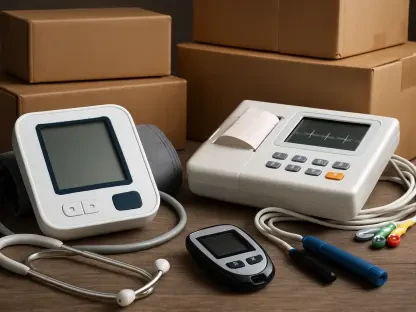What if brain surgery could be done without opening the skull? Scientists have recently developed tiny magnetic robots that might make this a reality. By leveraging the power of magnetic fields, these innovative tools could profoundly transform one of the most complex and delicate surgical procedures.
Exploring a New Horizon in Neurosurgery
Brain surgery is a critical procedure often required for treating tumors, epilepsy, and other neurological conditions. Traditional methods involve highly invasive techniques, including removing a portion of the skull to access brain tissue. These procedures come with significant risks, including long recovery periods and potential complications such as infections and brain damage. Consequently, there has been a growing demand in the medical field for less invasive surgical techniques.
The Birth of Tiny Robotic Tools
In response to these challenges, engineers and medical experts have developed robotic tools as small as 3mm in diameter. Small but mighty, these tools are specifically designed for neurosurgery. Despite their minuscule size, they possess the strength and precision necessary to perform intricate operations on the brain.
Utilizing magnetic fields generated by an innovative coil table, these robots differ significantly from their electric motor-driven counterparts. This groundbreaking approach enables precise control and reduces the complexity of mechanical design.
Advanced Control and Precision
Precision and dexterity are critical in brain surgery, and these new robotic tools excel in both areas. The system’s design allows it to mimic the delicate movements of a surgeon’s wrist, which is essential for performing operations without damaging surrounding tissues. Pre-clinical trials have demonstrated remarkable accuracy, with robotic tools achieving narrower incisions compared to standard surgical instruments.
Insights from Leading Experts
Eric Diller from the University of Toronto, a prominent figure in this research, emphasizes the potential impact of these innovative tools. He points out that early trials involving simulations on brain tissue substitutes such as tofu and raspberries have shown promising outcomes. According to Diller, this cutting-edge technology could significantly enhance neurosurgery precision and reduce patient recovery times.
Neurosurgeons have also expressed optimism about this advancement. They believe that the transition from traditional methods to magnetically powered robotic tools could mark a turning point in brain surgery. However, they also stress the importance of further research to ensure these tools are ready for clinical use.
Overcoming Practical Challenges
Despite the promising results, integrating these tiny robots into existing hospital environments presents several challenges. Compatibility with current imaging technologies, such as fluoroscopy, is crucial for accurate navigation during surgery. Researchers are continuing to address these hurdles to make the transition to practical applications as seamless as possible.
Ongoing testing and development are necessary before these tools can be standardized in clinical settings. Researchers remain committed to refining the technology and validating its efficacy through rigorous testing. The ultimate goal is to offer safer, more precise surgical options for patients in need of brain surgery.
Looking Ahead
As magnetic robots navigate their way from lab benches to operating rooms, the possibilities for enhancing patient care are vast. The journey toward widespread adoption involves persistent research, technological refinement, and clinical validation. The potential benefits extend beyond improved surgical precision and reduced recovery times, hinting at a transformative shift in neurosurgery practices.
In conclusion, while these tiny robotic tools are still in development, their potential to reduce invasiveness and enhance outcomes in brain surgery has been firmly established. The ongoing commitment to this research is paving the way for a future where complex brain surgeries are safer and more efficient, ultimately improving patient care and recovery.









